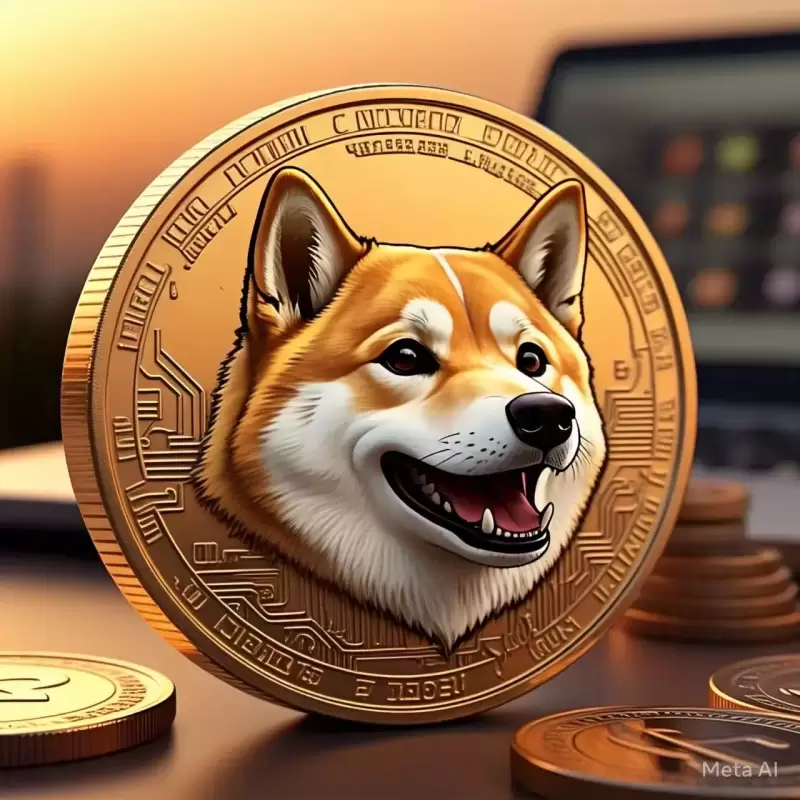 |
|
 |
|
 |
|
 |
|
 |
|
 |
|
 |
|
 |
|
 |
|
 |
|
 |
|
 |
|
 |
|
 |
|
 |
|
感觉就像我们在数字淘金热的边缘一样。然后 - 流行。气泡破裂,炒作冷却,现在很多曾经被绿色的令牌都在……坐在那里。

Remember when NFTs were the thing? Everywhere you looked, there was a new project, a new “must-have” digital collectible, and people throwing around words like “decentralized ownership” and “future of digital assets.” It felt like we were on the edge of a digital gold rush. And then – pop. The bubble burst, the hype cooled, and now a lot of those once-glorified tokens are just… sitting there.
还记得NFT是什么时候吗?您所看的任何地方,都有一个新项目,一个新的“必备”数字收藏品,以及人们围绕“分散所有权”和“数字资产的未来”等词。感觉就像我们在数字淘金热的边缘一样。然后 - 流行。气泡破裂,炒作冷却,现在很多曾经被绿色的令牌都在……坐在那里。
Meanwhile, in a totally different corner of the digital world, Counter Strike skins – yes, the same pixel-perfect gun wraps and knife designs – are still going strong. Some even gaining value, being traded daily, and staying at the center of a vibrant, community-driven economy.
同时,在数字世界的一个完全不同的角落中,反击皮肤 - 是的,同样的像素完美的枪和刀具设计 - 仍在发展。有些甚至获得价值,每天进行交易,并留在一个充满活力的社区驱动经济的中心。
So… what gives? Why did NFTs crash while CS skins not only survived, but thrived? Let’s dig into that – because the contrast says a lot about what makes digital assets actually work.
那么……什么给?当CS皮肤不仅生存,而且蓬勃发展时,为什么NFT崩溃了?让我们挖掘这一点 - 因为对比很大程度上说明了什么使数字资产实际上起作用的原因。
Utility Matters More Than Hype
公用事业比炒作更重要
公用事业比炒作更重要
Let’s start with the most obvious thing: CS skins actually do something.
让我们从最明显的事情开始:CS皮肤实际上做某事。
Sure, they don’t give you extra damage or faster reloads, but they live in a game that people play every single day. They have a purpose. You equip them, show them off, use them in clutch rounds, and they become part of your in-game identity.
当然,它们不会给您带来额外的伤害或更快的重新加载,但是他们生活在人们每天玩的游戏中。他们有目的。您将它们装备,炫耀它们,在离合器弹中使用它们,并成为您游戏中身份的一部分。
In contrast, most NFTs were just… images. No real function. You couldn’t use them in a meaningful way. You couldn’t flex them in a game, stake them for gameplay benefits, or really interact with them. The “ownership” was there, but the connection wasn’t.
相反,大多数NFT只是……图像。没有实际功能。您无法以有意义的方式使用它们。您无法在游戏中弯曲他们,将它们筹集给游戏玩法的好处,或者与他们真正互动。 “所有权”就在那里,但没有联系。
Like, imagine having a cool painting you love, versus having a brightly colored tile in a broader image with 9,999 other tiles. One you want to engage with, the other… well, it’s part of a set.
就像,想象一下自己喜欢的一幅很酷的画,而不是在更广阔的图像中拥有鲜艳的瓷砖,而其他9,999个瓷砖。一个您想与之互动,另一个……嗯,这是一部分的一部分。
And with Counter Strike esports skins, there’s a built-in ecosystem where those skins have value because they’re used. They’re part of the experience, not just floating in a digital void hoping someone else will buy them.
借助反击式电子竞技皮肤,有一个内置的生态系统,这些皮肤具有价值,因为它们使用了。它们是体验的一部分,不仅仅是在数字空隙中漂浮,希望其他人能购买它们。
A Culture Grew Organically
一种文化有机增长
一种文化有机增长
The CS skin economy didn’t appear overnight. It evolved naturally, starting with simple item drops in-game, then expanding to markets on Steam and third-party platforms, and finally blossoming into the vibrant trading communities we see today.
CS皮肤经济并没有在一夜之间出现。它自然而然地从游戏中的简单物品掉落开始,然后扩展到Steam和第三方平台上的市场,最后扩展到我们今天看到的充满活力的贸易社区中。
People got into it not because someone promised they’d get rich, but because the skins were fun, cool-looking, and made the game feel more personal. It was about collecting skins you liked, trading with friends, and getting involved in the esports scene if you wanted to.
人们之所以加入其中,不是因为有人答应他们会变得富有,而是因为皮肤很有趣,看上去很酷,并且使游戏变得更加个性化。这是关于收集您喜欢的皮肤,与朋友进行交易,并在电子竞技场景中参与其中。
NFTs? Most of that hype came from outside – investors, influencers, marketing machines all converging on the same few projects. The community grew fast, but not deep. There wasn’t a shared culture or connection like in CS. It was more about FOMO and flipping than anything else.
nfts?大多数炒作来自外部 - 投资者,有影响力的人,营销机器都聚集在同一项目上。社区发展迅速,但不深度。像CS中没有共同的文化或联系。这比其他任何事情都更重要。
I remember buying my first skin – a basic pistol wrap that wasn’t worth much, but it felt like mine. I used it in almost every match for months, got to know the patterns and how it looked in different lighting. I even felt a pang of sadness when I finally traded it up for something else.
我记得我买了我的第一个皮肤 - 一种基本的手枪包装,不值得,但感觉就像是我的。我几乎在每场比赛中使用它,几个月来都知道这些模式以及它在不同的照明中的外观。当我终于把它换成其他东西时,我什至感到悲伤。
Now, contrast that with an NFT I once got in a free mint. It looked cool for about a day, then just sat in my wallet, an image among many, no real function or engagement. By the time the project went quiet, so had my interest.
现在,与NFT进行对比,我曾经获得过免费的薄荷。它看起来很酷,大约一天,然后坐在我的钱包里,这是许多图像,没有真正的功能或订婚。当项目变得安静时,我的兴趣也是如此。
Of course, there are exceptions to every rule. Some NFT projects had strong communities and outlasted the initial hype cycle. But overall, I think the lack of inherent utility and the overwhelming focus on investment killed a lot of the potential there.
当然,每个规则都有例外。一些NFT项目具有强大的社区,并超过了最初的炒作周期。但是总的来说,我认为缺乏固有的效用和对投资的压倒性关注造成了许多潜力。
Real Demand vs Manufactured Scarcity
实际需求与制造稀缺性
实际需求与制造稀缺性
Here’s another thing: scarcity only matters if there’s demand for the thing that’s scarce. NFTs were often built around artificial rarity – 10,000 unique monkeys, cats, goblins, whatever. But if no one cares about them tomorrow, that scarcity doesn’t hold up. It’s like printing 10,000 copies of a boring poem and hoping people will pay for them.
这是另一件事:稀缺性只有在需要稀缺的东西的需求时才很重要。 NFT通常是围绕人造稀有性建造的 - 10,000个独特的猴子,猫,妖精等。但是,如果明天没有人关心他们,那稀缺就不会忍受。这就像打印10,000份无聊的诗,并希望人们能为他们付出代价。
In CS, certain skins are rare too. But the difference is – players actually want them. Not because they were told to by a shill on Discord, but because they look amazing, have a bit of history to them, or became iconic in esports events.
在CS中,某些皮肤也很少见。但是不同的是 - 玩家实际上想要他们。并不是因为他们在不和谐之中被骗子告诉他们,而是因为它们看起来很棒,对它们有一些历史,或者在电子竞技活动中成为标志性的。
Take skins like the AWP Dragon Lore or certain knife finishes. Their value isn’t just tied to low drop rates. It’s cultural. Players recognize them, streamers show them off in big moments, and Counter Strike esports skins have built reputations of their own over years of competitive play.
服用诸如AWP Dragon Lore或某些刀饰面之类的皮肤。它们的价值不仅与较低的下降率有关。这是文化的。玩家认识到它们,彩带在重要的时刻炫耀他们,而反罢工电子竞技的皮肤已经建立了自己多年来竞争性游戏的声誉。
Like,
喜欢,
免责声明:info@kdj.com
所提供的信息并非交易建议。根据本文提供的信息进行的任何投资,kdj.com不承担任何责任。加密货币具有高波动性,强烈建议您深入研究后,谨慎投资!
如您认为本网站上使用的内容侵犯了您的版权,请立即联系我们(info@kdj.com),我们将及时删除。
-

- Nakamoto的Satoshi干预 - 比特币的新一天?
- 2025-03-30 19:45:12
- 当Nakamoto不得不快速采取行动来修复关键比特币错误时,整个比特币网络将面临迫在眉睫的灾难
-

- 以太坊(ETH)仍然是分散融资(DEFI)和智能合约申请的领导者
- 2025-03-30 19:45:12
- 以太坊(ETH)仍然是分散财务(FAFI)和智能合同应用的领导者,但它处于十字路口。
-

-

- 美国证券交易委员会(SEC)正式放弃了对霍克·图阿女孩海莉·韦尔奇的所有指控
- 2025-03-30 19:40:13
- 经过详细的SEC加密调查后,发现韦尔奇对代币的崩溃不承担责任。 SEC启动了对鹰令牌的调查
-

-

- HEDERA(HBAR)主题技术不仅仅是另一种共识机制,它是一台速度机器
- 2025-03-30 19:35:13
- 虽然大多数区块链在TPS数字和第2层中奋斗,但Hedera跳过了戏剧,直接进行了表演。
-

- 随着加密货币的继续抗拒期望
- 2025-03-30 19:30:12
- Dogecoin(Doge)是2013年起着轻松的笑话的加密货币,继续违背期望,在数字资产市场中占据了独特的利基市场。
-

-




























































